Irish Distillers wants to cut greenhouse gas emissions by at least 30% between now and 2030, while growing sales each year, according to its environmental and energy manager James Browne.
Speaking at a meeting on renewable energy, he said distilling spirits on an industrial scale requires large amounts of heat, and the company hopes to generate more and more of this from renewable gas.
“This is a very important method of reducing carbon emissions, especially for large heat users. Green gas would come at a premium and we would need it to be recognised as sustainable,” said Browne.
Gas from sources such as food waste, agricultural waste or energy crops must meet EU criteria to ensure that its production is not associated with poor environmental practices.
Its use must also reduce greenhouse gas emissions by at least 70% compared to equivalent fossil fuels.
If it ticks these boxes, renewable gas can make financial sense for industrial customers.
“In Germany and other countries, companies who can prove they’re sourcing green gas can offset the need to buy CO2 allowances,” said Browne.
Large emitters of CO2 don’t have targets to cut their emissions: instead, they are in the EU Emission Trading Scheme (ETS), which work much like milk quotas in the past. Each year, the EU adds fewer and fewer free allowances to this market, and companies must buy quota from each other if they want to increase emissions.”
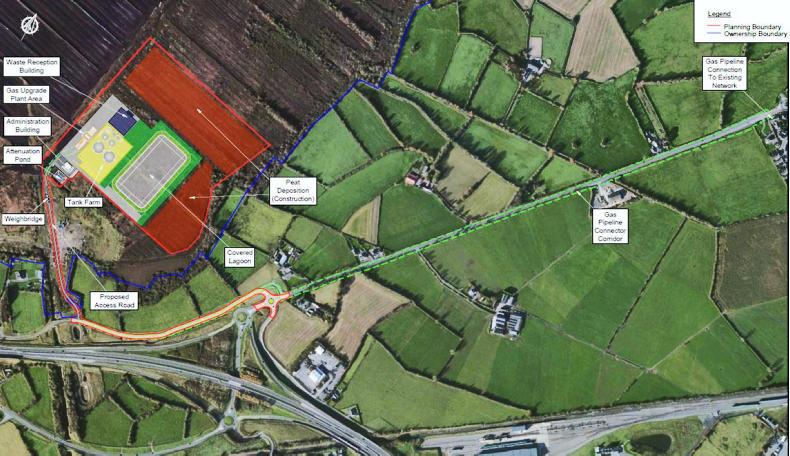
Layout of the proposed biogas plant at Cúil na Móna bog in Co Laois. \ Bord na Móna
Browne said Irish Distillers’ plans are based on the cost of these allowances increasing from €25/t of CO2 today to €80/t in 2030. The company already sources all its electricity from renewable sources. When it comes to heating fuel, “having green gas entered into the network and transited to our location is a very good solution, causing the least disruption,” Browne said. For this to happen, the company needs a “really robust, auditable and verifiable” system of certificates.
Portlaoise AD to process 80,000t of food waste and slurry
Bord na Móna is preparing a planning application and environmental impact assessment for an industrial anaerobic digester on Cúil na Móna bog outside Portlaoise, Co Laois.
If approved, the plant will produce around 60GWh of gas annually, equivalent to the consumption of 5,500 homes, as the digester is capable of processing 80,000t of non-hazardous organic material every year. After upgrading to the same quality as natural gas, it will be injected into the national network via a 2.3km pipeline.
The plant will primarily process food waste coming from household brown bins, unsold retail items or the food processing industry. It will also be licensed to take in cattle, poultry and pig slurry to fluidify its feedstock.
“If we have a lot of solid material, we might need slurry,” project manager Barry Hooper told the Irish Farmers Journal.
Purpose-grown crops such as grass silage or maize are also under consideration, but there are no plans yet to buy any from farmers. “Our issue at the moment is that there is no support scheme for biomethane,” said Hooper. “Crops are more expensive than byproducts,” he added, and AD plants usually charge a fee to take in food waste.
The digestate resulting from the process will be stored in a covered lagoon and distributed to farmers in Co Laois and surrounding counties through licensed contractors during the spreading season. Digestate can be an efficient fertiliser on tillage farms (see Table 1).
“We see the farming community as stakeholders in the project and there are benefits to be had from the disposal of digestate as a liquid biofertiliser,” said Hooper.
Bord na Móna’s project is the latest large-scale investment by an existing agribusiness company in anaerobic digestion.
As previously reported, Dairygold uses dairy processing waste as feedstock in an AD at its Mitchelstown plant and is also interested in developing renewable gas as a heat user for milk drying and as a co-op to source it from farmers.
Government's green gas costs 'misleading'
The Government’s climate action plan has pushed back the development of biomethane production from for heating to a later date because it is too expensive, based on an estimate that each tonne of CO2 emissions avoided with this technology would cost €377.
RGFI’s PJ McCarthy has described this as “misleading and a misrepresentation of data”, with only the highest cost estimated for gas from seaweed harvesting taken into account. Renewable gas from agricultural sources would cost €60 to €129 per tonne of CO2 avoided, according to RGFI’s figures.
Read more
First farm biogas flows to national grid
Can farmers cash in on biogas?
Cork biogas project to support 20 farm-based anaerobic digestors
Gas grid wants 10m tonnes of silage from farmers
Irish Distillers wants to cut greenhouse gas emissions by at least 30% between now and 2030, while growing sales each year, according to its environmental and energy manager James Browne.
Speaking at a meeting on renewable energy, he said distilling spirits on an industrial scale requires large amounts of heat, and the company hopes to generate more and more of this from renewable gas.
“This is a very important method of reducing carbon emissions, especially for large heat users. Green gas would come at a premium and we would need it to be recognised as sustainable,” said Browne.
Gas from sources such as food waste, agricultural waste or energy crops must meet EU criteria to ensure that its production is not associated with poor environmental practices.
Its use must also reduce greenhouse gas emissions by at least 70% compared to equivalent fossil fuels.
If it ticks these boxes, renewable gas can make financial sense for industrial customers.
“In Germany and other countries, companies who can prove they’re sourcing green gas can offset the need to buy CO2 allowances,” said Browne.
Large emitters of CO2 don’t have targets to cut their emissions: instead, they are in the EU Emission Trading Scheme (ETS), which work much like milk quotas in the past. Each year, the EU adds fewer and fewer free allowances to this market, and companies must buy quota from each other if they want to increase emissions.”

Layout of the proposed biogas plant at Cúil na Móna bog in Co Laois. \ Bord na Móna
Browne said Irish Distillers’ plans are based on the cost of these allowances increasing from €25/t of CO2 today to €80/t in 2030. The company already sources all its electricity from renewable sources. When it comes to heating fuel, “having green gas entered into the network and transited to our location is a very good solution, causing the least disruption,” Browne said. For this to happen, the company needs a “really robust, auditable and verifiable” system of certificates.
Portlaoise AD to process 80,000t of food waste and slurry
Bord na Móna is preparing a planning application and environmental impact assessment for an industrial anaerobic digester on Cúil na Móna bog outside Portlaoise, Co Laois.
If approved, the plant will produce around 60GWh of gas annually, equivalent to the consumption of 5,500 homes, as the digester is capable of processing 80,000t of non-hazardous organic material every year. After upgrading to the same quality as natural gas, it will be injected into the national network via a 2.3km pipeline.
The plant will primarily process food waste coming from household brown bins, unsold retail items or the food processing industry. It will also be licensed to take in cattle, poultry and pig slurry to fluidify its feedstock.
“If we have a lot of solid material, we might need slurry,” project manager Barry Hooper told the Irish Farmers Journal.
Purpose-grown crops such as grass silage or maize are also under consideration, but there are no plans yet to buy any from farmers. “Our issue at the moment is that there is no support scheme for biomethane,” said Hooper. “Crops are more expensive than byproducts,” he added, and AD plants usually charge a fee to take in food waste.
The digestate resulting from the process will be stored in a covered lagoon and distributed to farmers in Co Laois and surrounding counties through licensed contractors during the spreading season. Digestate can be an efficient fertiliser on tillage farms (see Table 1).
“We see the farming community as stakeholders in the project and there are benefits to be had from the disposal of digestate as a liquid biofertiliser,” said Hooper.
Bord na Móna’s project is the latest large-scale investment by an existing agribusiness company in anaerobic digestion.
As previously reported, Dairygold uses dairy processing waste as feedstock in an AD at its Mitchelstown plant and is also interested in developing renewable gas as a heat user for milk drying and as a co-op to source it from farmers.
Government's green gas costs 'misleading'
The Government’s climate action plan has pushed back the development of biomethane production from for heating to a later date because it is too expensive, based on an estimate that each tonne of CO2 emissions avoided with this technology would cost €377.
RGFI’s PJ McCarthy has described this as “misleading and a misrepresentation of data”, with only the highest cost estimated for gas from seaweed harvesting taken into account. Renewable gas from agricultural sources would cost €60 to €129 per tonne of CO2 avoided, according to RGFI’s figures.
Read more
First farm biogas flows to national grid
Can farmers cash in on biogas?
Cork biogas project to support 20 farm-based anaerobic digestors
Gas grid wants 10m tonnes of silage from farmers







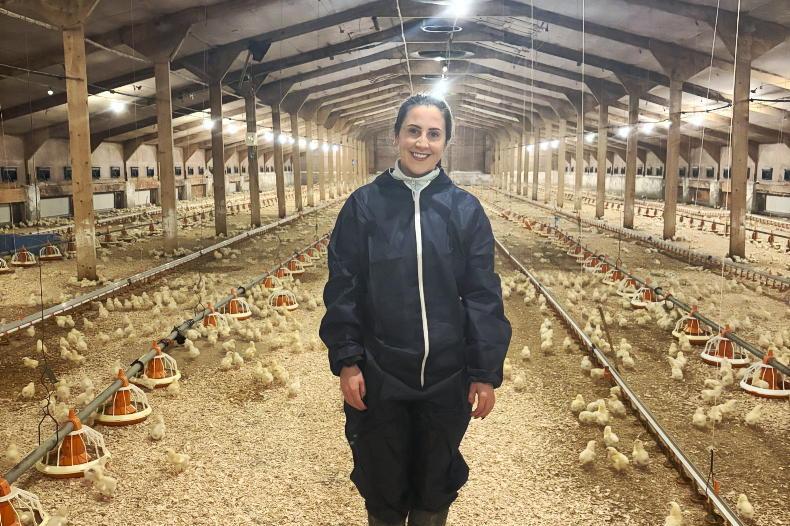

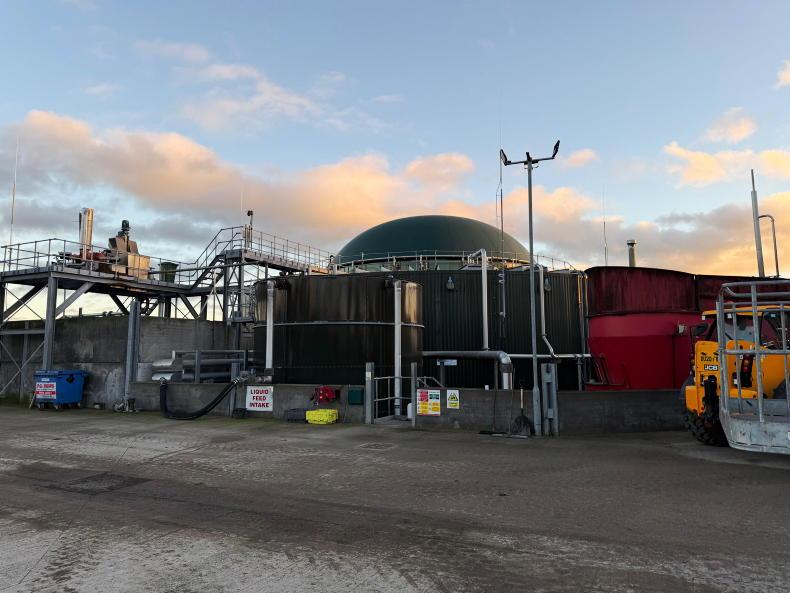
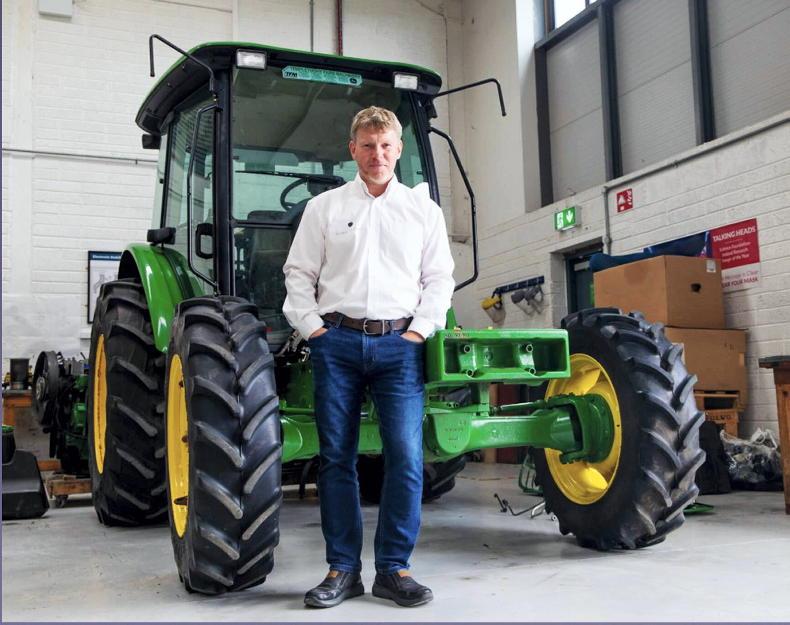
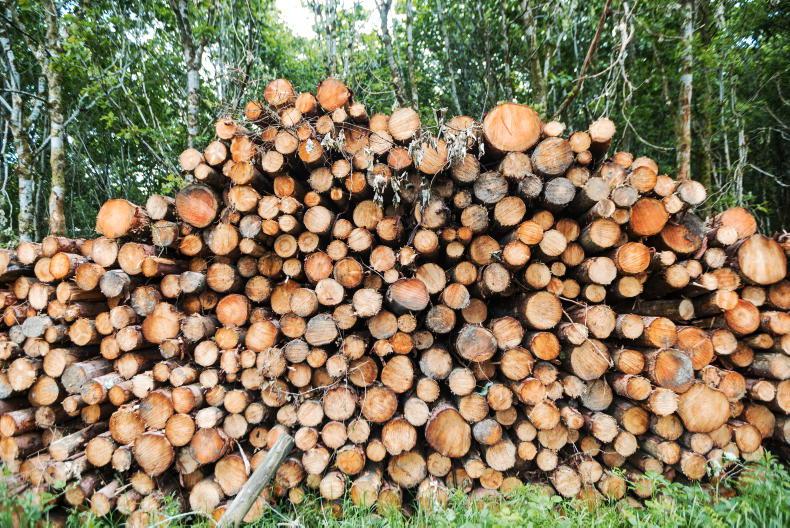
SHARING OPTIONS